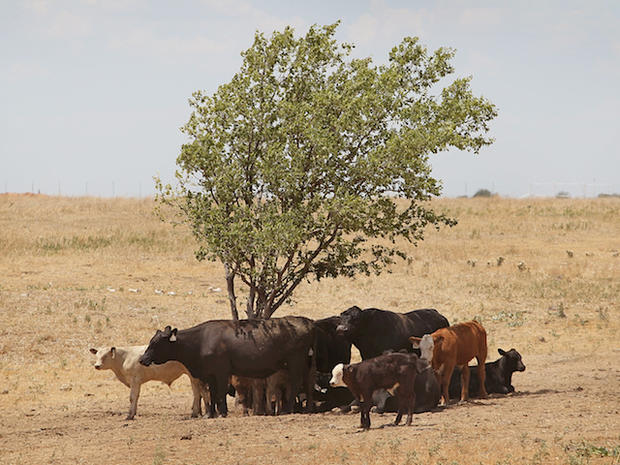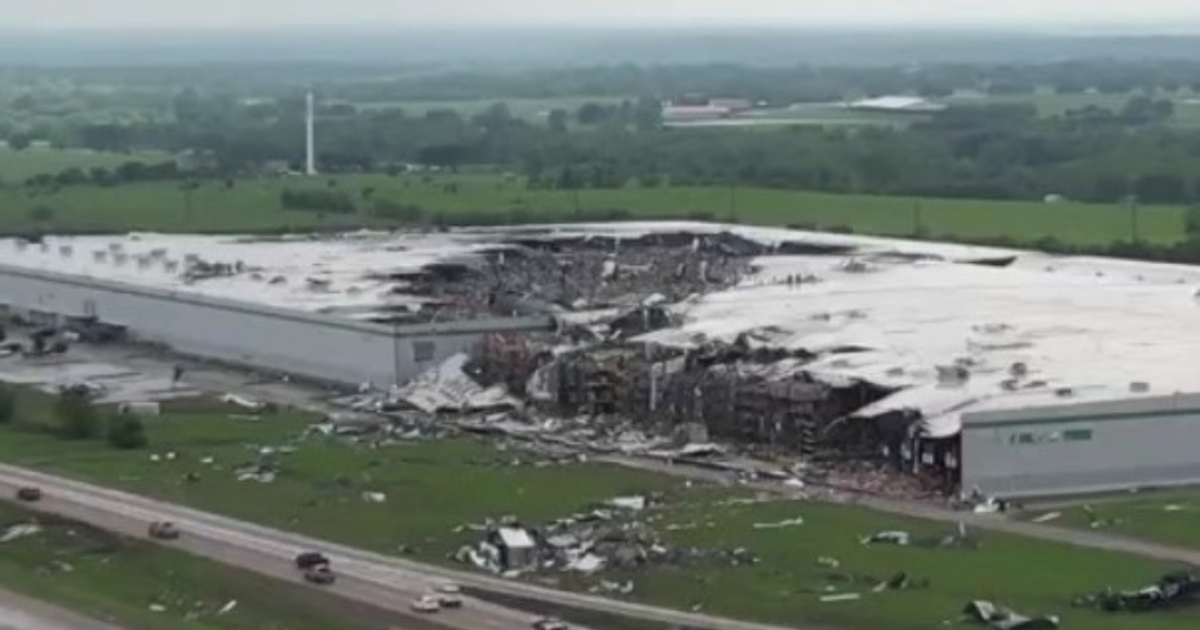Drought Could Be A Factor In Livestock Anthrax Cases
DES MOINES, Iowa (AP) — Anthrax has killed more than 100 animals on ranches in Texas and Colorado within the past two weeks, and experts say the risk of infection may be greater with drought covering much of the United States.
Anthrax outbreaks happen occasionally in livestock herds and wild animals in the U.S., usually west of the Mississippi River. Animals typically contract the disease by ingesting or inhaling spores that can survive in soil for decades. Once infected, livestock can die within hours.
Anthrax bacteria react to drought and other harsh conditions by producing more spores, and scientists said conditions are ripe for disease this year. A drought stretches from Ohio west to California and from Texas north to the Dakotas. Many places also have been burned by unusually long stretches of triple-digit temperatures.
"My concern is that if we have more and more drought, if drought frequencies go up, we will see greater frequencies of these outbreaks," said Mary Stromberger, associate professor of soil microbiology at Colorado State University.
More than 60 cows on three Colorado ranches and nearly 50 sheep from a Texas herd have died so far. Anthrax experts and veterinarians warned ranchers to watch their herds for sudden deaths, the usual sign of an anthrax infection. Entire herds can be decimated by an outbreak if animals are not quickly vaccinated.
Anthrax cases have frequently been documented along the route of cattle drives common in the 1800s during the westward migration of pioneers and their livestock. The bacteria's spores seem to survive better in alkaline soil with high levels of calcium, a type abundant in the West. In general, however, the spores are extremely durable and can lie dormant for years. Once ingested, they reconstitute and spread rapidly through the body of warm-blooded animals.
Humans usually get anthrax through direct contact with infected livestock, often when spores get into a cut on the skin. Without treatment, anthrax can be fatal, but early treatment with antibiotics is very effective.
More than 1,600 animals, including deer, antelope, cows, sheep, horses and llamas, died in a 2001 anthrax outbreak in Texas.
The most recent outbreak was identified last week in a cow herd in northeast Colorado's Logan County. About 60 cows died at a ranch where one had been diagnosed with the first anthrax case in Colorado in 31 years, state officials said. On Wednesday, they announced cows on two adjacent ranches also had died from anthrax.
It's believed all the animals were infected by grazing in an area with spores in the soil since the three ranches share fences, Colorado State Veterinarian Keith Roehr said.
The ranches were quarantined, animals vaccinated and ranch workers treated with antibiotics as a precaution, health officials said.
About 40 sheep died last month in a separate outbreak on a ranch in western Texas near Mertzon, about 26 miles southwest of San Angelo, said Dr. Pete Fincher, the regional director for the Texas Animal Health Commission. The area was quarantined and the surviving sheep vaccinated. No animals have died since, Fincher said.
"I would consider this a normal sporadic occurrence," he said. "I think it's mother nature's way of reminding you that it's still out there, but it's not cause for any over concern at this point in time."
Anthrax is found occasionally in livestock or wildlife in a triangular area of Texas along the southwestern border with Mexico, and it's common for ranchers in the region to vaccinate livestock, Fincher said.
The cases in Colorado are still being investigated, and officials said they don't know what, if any, role drought played in the cattle deaths.
But experts said drought could contribute to anthrax deaths by stressing animals and weakening their immune systems. Grazing animals, including cows, also eat closer to the ground in drought and are more likely to ingest spores while eating, said Grant Dewell, an Iowa State University beef veterinarian.
"It happens in floods and it happens in droughts. Anytime we disturb that soil layer, we're more likely to get some anthrax," he said.
Soil often becomes contaminated with anthrax when infected carcasses that have been cut up or torn open by wild animals are buried, said Martin Hugh-Jones, coordinator of the World Health Organization's Working Group on Anthrax Research and Control. Tissue and blood spills into the soil, carrying the disease.
He recommended ranchers dispose of infected carcasses quickly by burning them and the surrounding ground. Fire kills anthrax spores.
Along with the Colorado and Texas outbreaks, Hugh-Jones is looking at the deaths of more than 430 bison in Canada's Mackenzie Bison Sanctuary. It's the largest bison kill by anthrax in the region's history and three times the typical toll in an area that regularly sees anthrax outbreaks, Hugh-Jones said. Most happen during hot, dry spells in late summer, when it's believed bison pick up the spores during vigorous wallowing in dust baths.
It's not clear why this year is more severe.
"What seems to have been happening was it was quietly spreading, and people weren't seeing the carcasses and suddenly everything was right this year for it to take off as an epidemic," Hugh-Jones said.
(© Copyright 2012 The Associated Press. All Rights Reserved. This material may not be published, broadcast, rewritten or redistributed.)
Also Check Out:




